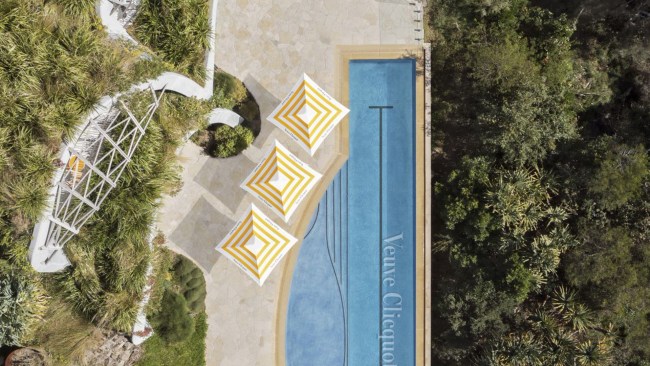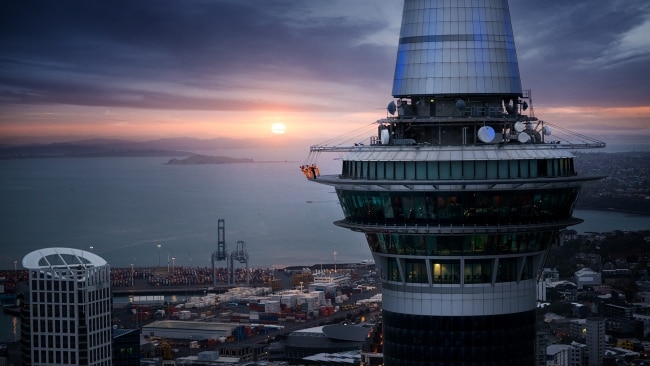Mad Max goes wild in Namibia’s sand dunes and desert
The latest Mad Max film was shot amid the bleak but beautiful Namibian landscape.

Soaring over Namibia’s Skeleton Coast in a single prop Cessna 210, just 300m from the ground, I can see the contours of hundreds of vessels that have run aground on this remote Atlantic headland, slowly corroding in the saline mist and rusting beneath the sand dunes.
The only sign of life is the hundreds of seal colonies that commandeer huge sections of this seemingly endless coastline, like infantries patrolling their territories. As we continue up the coast, a flamboyance of bright pink flamingoes escorts us out of their airspace. This is an isolated realm of raging currents and swirling winds, where thick blubber and aerodynamic plumage seem to be the desired attire. “You wouldn’t survive for more than a day down there,” my pilot, Mark, discloses with a wry grin. As if I need reminding.
With a population of just 2.3 million scattered over an area slightly larger than NSW, Namibia is vast, wild and rugged. Bleak yet beautiful, stark yet stunning, it brandishes one of the world’s most photogenic and innately cinematic landscapes — unsurprisingly, it has caught the attention of filmmakers, as well as travellers. Chosen by Australian director George Miller as the setting in which to unravel Mad Max: Fury Road — which has taken more than $US350 million ($470 million) at the box office worldwide since opening in May — Namibia’s epic landscapes serve as the perfect location to continue the dystopian depiction of the future he captured so vividly in the first three instalments of the action movie series. Smothered with huge, shapeshifting dunes, inhospitable coastlines and rugged mountain ranges, it is a harsh and lunar landscape of staggering proportions.
Large parts of the film were shot on the outskirts of the coastal town of Swakopmund, the southern boundary of the Skeleton Coast, in a rocky and undulating area known as the “Moon Landscape” and it is here that I meet the film’s Namibian production manager, Raymond Inichab, who moonlights as a tour guide. “Here, we have one of the oldest and emptiest deserts in the world,” he tells me as I stare over the cratered, boulder-strewn scene. “The production crews that came here were stunned by what we have. I’m expecting this to be a busy time for Namibia.”
In the first three Mad Max movies, Miller indulges in prolonged, almost lascivious, shots of the Australian Outback. In Namibia, the director has found a similarly seductive backdrop that is impossible to tear your eyes away from. Producers can spend years composing their mise en scene, but in Namibia the searing sun and roaring winds have designed a set that is all but finished. Playing out 50 years in the future, Fury Road sees Max, played by Tom Hardy, and Furiosa (Charlize Theron), attempting to traverse a desolate and inhospitable desert while trying to outrun a bloodthirsty gang. As I follow in their footsteps, it doesn’t take much of an imagination to see why this country has appealed to Miller. While the first three films see Max either chasing, or being chased through Australia’s familiar dusty red Outback, flooding in NSW forced production of the film to take place in Africa at the 11th hour. Nevertheless, the stand-in setting perfectly captures the desperation of the characters.
Despite its apparent hostility, though, this sliver of southwest Africa still supports a star-studded cast of fauna. Staying at the recently opened Hoanib Skeleton Coast Camp, in the north of the country, is like taking up prime position on the red carpet and I am poised to catch a glimpse of one of Namibia’s A-list cast of wildlife. “Would you like a relaxing drink or shall we track some elephants?” asks my guide, Charles, at the end of another sunbaked afternoon.
“Both?” I reply gingerly with the same upward inflection of a glutton unable to choose between two desserts. Within five minutes I am bundling into the back of his 4WD with a cool box packed with frosty local beers and a bottle of South African chardonnay, just in case. As we bump along the parched bed of the Hoanib River away from camp, the setting sun washes an auburn haze over spinneys of emerald undergrowth while a light breeze swirls sand along the ground. All around me I can see a habitat slowly stirring after the searing heat of the day and an animal kingdom waking up to its nocturnal calendar. Charles has spotted a few faint, but substantial elephant footprints in the sand. We start to follow them eagerly, but cautiously.
As we drive on along the riverbed, a troop of lethargic baboons nibbles at fermenting fruits like office workers indulging in a swift pint after work, while a towering giraffe stretches its already extensive neck to the verdant summit of an acacia tree. Then, as I take another refreshing swig of ice-cold beer, I can see a herd of at least half a dozen elephants wandering along, nose-to-tail in the distance. The rapid transition from anticipation to reality leaves me strangely nervous. We have stumbled across a group of elephants in a conservation area, just 25km from the camp and within half an hour. I can’t help but feel slightly embarrassed that it has unfolded so easily.
The rare Namibian desert elephant has managed to survive in this scorched corner of Africa, despite the lack of regular rainfall, alongside other large animals such as lions, oryx and giraffes. They need to eat up to a quarter-tonne of foliage every day and we have rudely arrived, unannounced, at dinner time. Found only in Namibia and Mali, desert elephants have adapted to their surroundings by evolving longer legs, broader feet and smaller bodies, and can survive for up to three days without water. They are the long-distance athletes of the animal world. Now just 600 or so are believed to exist in the Namibian wilderness and can be found roaming anywhere within an area of 116,500sq km.
I have stumbled across an animalistic needle in a haystack. “I bring tourists here from all over the world,” says Charles. “And sometimes in two weeks of searching we don’t find any elephants.” I am struck by their grace despite their colossal mass and by the dexterity of their long, leathery trunks. Some are using them to pull down whole trees while others can pick off individual leaves with the nimbleness of a master watchmaker. One of the older females stands up on her hind legs to grab the slightly greener foliage at the top of a nearby bush. With quadriceps the size of motorbikes she is able to balance with the poise of a prima ballerina.
All too quickly, murky twilight envelops us and I begrudgingly have to agree with Charles that it is our cue to leave. Still, this snapshot of serene beauty shared with Namibia’s real superstars is the perfect way to end a blockbuster trip.
Checklist
Operators offering safari holidays in Namibia include Abercrombie & Kent and the Classic Safari Company plus representation agency Africa Reps. More: www.abercrombiekent.com.au; www.classicsafaricompany.com.au; www.africareps.com.
THE INDEPENDENT
Mad Max: Fury Road is screening in cinemas Australia-wide.


